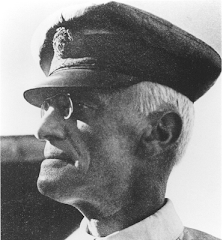.JPG) This is a brief look at some of the news items, technological development’s and influences that may have effected the creation a few of the ‘Westerman’ yarns that involve submarines and airships – after all, airships really do look like flying submarines, don’t they?
This is a brief look at some of the news items, technological development’s and influences that may have effected the creation a few of the ‘Westerman’ yarns that involve submarines and airships – after all, airships really do look like flying submarines, don’t they?If you have an opinion or an observation you would like to contribute regarding this item please email me westermanyarns@gmail.com
The early 1900’s were exciting times in the development of new technological break-through’s. In 1870 the French novelist Jules Verne had captured the imagination of the public with his book ‘Twenty Thousand Leagues Under the Sea’ Over the next thirty years the real working submarines began to take shape and become viable tools of war.
 Craft designed by Frederich Otto Vogel (German), Claude Goubet (French), Gustave Zede French), Josiah H.L Tuck (American) all contributed to the development of submarine development. For Britain however, one name became synonymous with the submarine – John Phillip Holland (Ireland). Holland (Pictured left) had been designing submarines in America since 1875, but it was one of his designs that was chosen and accepted by the British Navy as the first British submarine type.
Craft designed by Frederich Otto Vogel (German), Claude Goubet (French), Gustave Zede French), Josiah H.L Tuck (American) all contributed to the development of submarine development. For Britain however, one name became synonymous with the submarine – John Phillip Holland (Ireland). Holland (Pictured left) had been designing submarines in America since 1875, but it was one of his designs that was chosen and accepted by the British Navy as the first British submarine type.Built at Barrow in Furnace, Holland 1 was launched on October 2, 1901 and was began service with the Royal Navy, Portsmouth in 1902.
 Submarines, at this time were always newsworthy. In 1904 as part of a Royal Naval exercise with the First Fleet, five Holland submarines were assigned to defend Portsmouth and successfully torpedoed four warships. The same year saw the first major submarine accident when, close to the Nab Tower Lighthouse, Holland’s latest design, the A-1 was hit, whilst submerged, by the SS Berwick Castle (a passenger ship) with the tragic loss of all hands (Seven of the crew were from Portsmouth).
Submarines, at this time were always newsworthy. In 1904 as part of a Royal Naval exercise with the First Fleet, five Holland submarines were assigned to defend Portsmouth and successfully torpedoed four warships. The same year saw the first major submarine accident when, close to the Nab Tower Lighthouse, Holland’s latest design, the A-1 was hit, whilst submerged, by the SS Berwick Castle (a passenger ship) with the tragic loss of all hands (Seven of the crew were from Portsmouth).
It is very likely that Percy would have read ‘Twenty thousand Leagues Beneath the Sea’ as he was growing up and this would have sparked his creative imagination, but during his time, working as a clerk in the Naval Dockyard these elements of technological fantasy were becoming fact. When the Holland 1 arrived in Portsmouth to be based at Fort Blockhouse, Gosport (HMS Dolphin), Percy was working in the Naval Base as a clerk. The 1904, A-1 accident off the Nab Tower was reported in the Portsmouth News, and the sad fact that seven of the crew were local men would have made this a talking point. Submariners were the astronauts of their time, and this was seen as a very risky area of development to be involved in. Only a few years later the A3 was also sunk with another loss of all hands following a collision off Bembridge, IOW with the ironically named, HMS Hazard.
The Airships
Progress in taking to the skies had been rapid since the first powered flight of a fixed wing aircraft by the Wright Brothers in 1903. Yet in 1900 the first airship had taken to the skies from a floating hanger on Lake Constance. The airship, the LZ1, designed by Count Ferdinand von Zeppelin, containing 400,000 cubic feet of potentially explosive hydrogen gas and measuring a massive 420 feet long with a 38 foot diameter, became the largest man-made object to take to the air.
In the early days of the First World War Germany launched a series of attacks from the air with their Zeppelin fleet. On the night of 25 September 1916 a Zeppelin attack on Portsmouth took place. The banks of search-lights in the Naval Base picked out the eerie shape of the Zeppelin as it delivered the towns ;first of many, aerial bombardments, as it moved slowly down the eastern side of the town , heading out to sea in the direction of the Isle of Wight. The town defences filled the air with sound of gunfire. It is not clear from my research, what the impact of the raid was, but a national report for that date, tells that on that night, a total of seven Zeppelin’s attacked British soil with 43 killed and 31 injured.
The pre titled Naval Wing of the Royal Flying Corps was formed in to the Royal Naval Air Service on 1st July 1914 where by only 198 men of all ranks were transferred under the command of Commander E A D Masterman. This was later known as the Airship Section. It was recognised that a sea-warfare advantage could be obtained with an eye in the sky, submarine spotting capability. Development of what became known as the Submarine Scout (SS) class airships. Introduced in 1915, these small craft could be launched from the deck of a ship; carry a crew of two; a wireless; have an arsenal of 160lbs of bombs; enough fuel for eight hours flying and a top speed of 50mph.
The British had been building airships since WW1 and the R-34 made the first East -West crossing of the Atlantic in 1919. The R-100 had her maiden flight on December 16, 1929. Built by a subsidiary of Vickers-Armstrong by a design team led by Barnes Wallis and assisted by Neville Shute Norway* (Senior Stress Engineer).
Percy had left Portsmouth before the Zeppelin incident of 1916, but his mother was still living in Campbel Road, Southsea just a few miles away from the centre of the raid so it would be safe to assume that he would have been concerned for her safety.
and so to finish...
In 1926 one of the famous Sexton Blake stories was titled ‘The Submarine that Sank Upwards’ published by Amalgamated Press (Author: Anon). On the Blakiania website (http://www.sextonblake.co.uk/) the story has been adapted and re-titled ‘The Case of the Flying Submarine’. How close is that to the Percy Westerman idea from the ‘The Mystery of the Flying Submarine’?

The fantasy of a vessel that can both fly and dive beneath the waves will capture the imagination of the reader, but put this into the context of the period when airships and submarines are still making the news. Strange but true, the frontpice image from 'The Mystery of the Flying Submarine' (top of the page) makes for a real stretch of the imagination, but a San Francisco based artist, Matt Hope in collaboration a China based inflatable company recently produced a one-third scale inflatable replica of a Russian submarine!!
The Books
Below is a list of books that feature submarine and airship influences – Please note that this is not a conclusive list. Please email any comments or corrections that will help in ensuring the accuracy of the list:-
‘The Flying Submarine’ (1912), Illustrator: John de Walton
‘Rival Submarines’ (1913), Illustrator: C. Fleming Williams
‘The Dreadnought of the air (1914)’, Illustrator: C. Fleming Williams
‘The Secret Battleplane’ (1916). Illustrator: Ernest Prater
‘The Submarine Hunters’ (1919), Illustrator: Edward S. Hodgson
‘A Sub and a Submarine’ (1919), Illustrator: Edward. S. Hodgson
‘The Airship “Golden Hind”’, (1920, Illustrator: C. Fleming Williams
‘The Pirate Submarine’ (1923), Illustrator Galli
‘The Black Hawk’,(1934), Illustrator: Rowland Hilder
‘The Phantom Submarine’ (1947), Illustrator: J. C. B. Knight
* In 1933 Neville Shute Norway moved his company Airspeed Ltd to the Portsmouth Airport site where he remained as Managing Director until 1938. One of his books Lanfall: A Channel Story uses Portsmouth and the region as the backdrop.
www.airships.net/
www.submarine-history.com/NOVAtwo.htm
.JPG)






